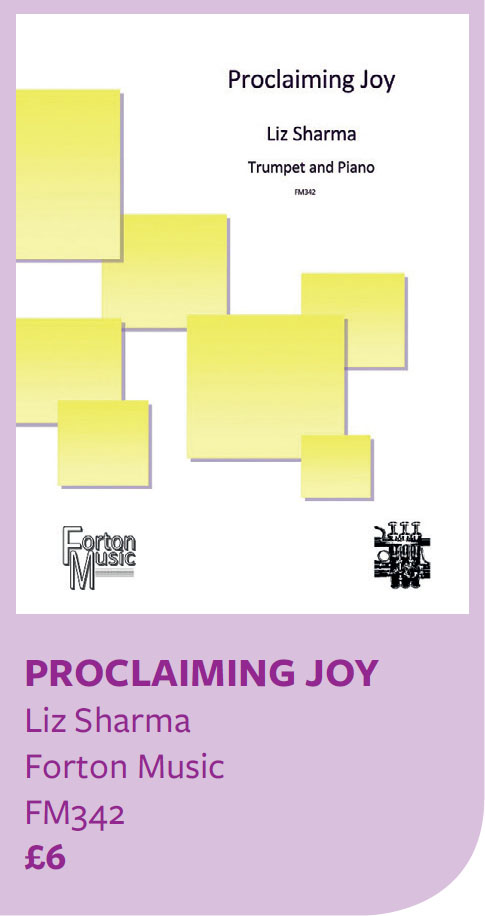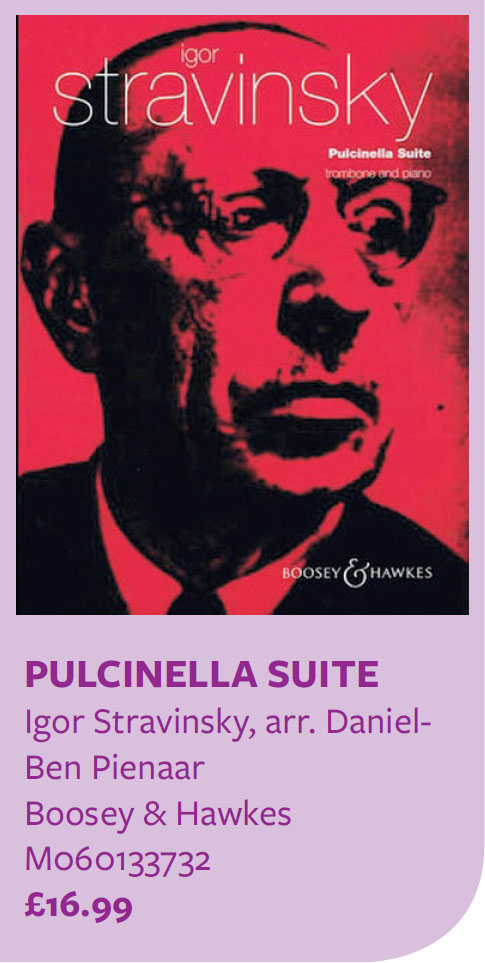
Child's Play
A collection of 18 easy pieces for trumpet and piano, it guides the player from complete beginner to Grade one standard. The book would be a perfect companion for the tutor to dip in and out of – choosing performance pieces that have a dedicated piano accompaniment part. Emphasis is placed on accessibility, starting with an easy single note piece.
From the start, the introduction of new notes simply and logically follows the same order, as for most standard tutor books. The first ten pieces use the basic five notes encountered by the majority of beginner trumpet books. These five notes are used in old favourites such as ‘When the Saints’ and ‘Lightly Row’ but most of the pieces are in fact new original compositions by James Rae. Rae's self penned pieces are in popular styles with reggae, rock, jazz and boogie grooves adding interest for modern day young players. There are also moments of quieter, more reflective playing in ‘Carol of the Cradle’ and ‘Daffodil Waltz’, it's always good to test beginners’ raw tone with a soft dynamic challenge! The notation in the trumpet part is easy to read with the note head size being larger than average to help spot the lines and spaces. Rae has made clear how to perform the pieces with interpretive markings in slurring, staccato, accenting detail and expression giving a clear indication of style and emphasis. He has also included some amusing cartoons which are often placed next to the titles; the cartoons can even be downloaded for colouring in. The piano part is as equally clearly notated, and most teachers should be able to play however basic their piano technique. For those who would still be challenged by the reading or playing of piano, chord symbols have been provided, so they can interpret the part in their own style. The book is a welcome addition to the repertoire for new trumpet players. It is good to see an absolute beginners book produced by a musician with experience of writing and producing music for learning. Each stage has been well thought through and there is a good flow of structure from piece to piece. This book will encourage learners and hopefully give them the confidence to take their first steps into the concert hall, with a solo performance. Those turtles who all began together on the beach are on their way with this book.

Proclaiming Joy
This is a contemporary piece for trumpet and piano, although I can hear this piece – due to its fanfare like opening and accompanying parallel chords – working well in a liturgical setting with an organ accompaniment. The time signature changes take a little getting used to in the playing, but the harmonic sequence structure is less changeable, providing a foundation on which to quickly understand the piece. The piano part has some tricky semiquaver passages in both hands and provides transition passages between the sections, that links the bars rest in the trumpet part. Therefore this is not a piece to hand to the accompanist at the last minute and expect a well-coordinated performance.
The piano part has been set across five pages and it is a shame that the final page turnover has not been planned one bar later when there is a convenient bar's rest. The trumpet part's overall range suggests that the piece would be a good fit for Grade 6. However, there are a couple of semiquaver runs that might be a little too difficult for a player of this standard – alternative fingerings would have to be used to avoid lip slurring. There is also one passage where the Grade 6 player would be challenged by the wide interval leaps. ‘Proclaiming Joy’ is set in Con-cert C major, which ensures the uplifting sound and feels right for the piano, but at the same time it transposes the B♭ trumpet part into D Major. A better plan would have been for the trumpet part to be in C major – to show off its big open note sounds on its ‘Gs’ and ‘Cs’. The entire piece could then be transposed down a whole tone, meaning it would be suitable for more players of Grade 6 standard, allowing them to play over a more manageable range. Our turtles have reached the halfway point now.

Pulcinella Suite
This arrangement of Pulcinella Suite for trumpet and piano is a collaboration between Daniel-Ben Pienaar and Jonathan Freeman-Attwood, both being senior members of staff at the Royal Academy of Music. These two eminent music educators first performed and recorded this piece themselves in 2015 and have now published the transcription with Boosey & Hawkes. The extensive notes at the beginning of the publication say that, ‘re-imagining the past by choosing to transcribe an existing composition is essentially a process of retrospective repair work: creating a new perspective for an older work through realising its essential ingredients within a fresh con-text, thereby offering new possibilities for performers and audience alike’. For a trumpet player at the top of their game this is a dream of a publication. The trumpet alone now gets to play all of the orchestral themes within the suite – the test now regards the stamina that is required to play an eight-part suite, as the piano part is mainly there for support and linking between sections. All of the detail in the trumpet part is of the highest order and in addition there is the helpful performance note ‘that the articulation and expression markings have been kept to a minimum to allow performers to reference the original score’. This gives the performer full artistic licence, allowing them to bring their own interpretation into their playing. From the range alone of the trumpet part – which goes all the way up to top D from the C – it is clear that the piece is intended for post Grade 8 music conservatoire students. To perform the whole eight movements would be an incredible feat of endurance but I assume for most players this will be a reference work – certainly one for the conservatoire libraries to have as part of their stock. It could be that one or two movements could be taken out and performed as part of a final recital. To have the famous ‘Toccata’ completely notated for trumpet and piano is one arrangement that is worth the purchase alone, but there is also so much more within the publication. Players who are able to tackle this piece have virtually completed their trumpet playing journey. Compared to all of those turtles on the beach at the beginning, there are now only a few select fully grown adults swimming the currents of the ocean.








